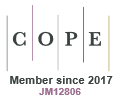Epidemiology of notified chlamydia infections, Queensland, 2000–2019
Troy A. Laidlow A B * , Kathleen Lynch
A B * , Kathleen Lynch  C , Satyamurthy Anuradha
C , Satyamurthy Anuradha  D , Craig Thompson E , Davoud Pourmarzi A F , Jane Hocking
D , Craig Thompson E , Davoud Pourmarzi A F , Jane Hocking  G and Stephen B. Lambert
G and Stephen B. Lambert  B
B
A
B
C
D
E
F
G
Abstract
Chlamydia infection is a frequently reported notifiable condition in Queensland, with the highest prevalence observed among young people. Infection can occur in several sites including the anus, eye, pharynx, cervix/vagina, and urethra. Currently, historical trends in chlamydia by site of infection in Queensland are unknown.
A descriptive analysis of all chlamydia notifications in Queensland, 2000–2019, was performed. Queensland Health statewide notification data were classified as either anorectal, eye, genitourinary, upper respiratory tract, or other/unspecified. The number of chlamydia tests and proportion of tests positive for chlamydia were calculated using Medicare online testing data. Population denominator values were obtained from the Australian Bureau of Statistic’s catalogues.
Over the 20-year period, chlamydia notifications increased, particularly among individuals aged 20–24 years. However, there was a noticeable decline in genitourinary notifications among those aged 15–19 years since 2010. Despite increased testing, the ratio of positive specimens to testing decreased among females aged 15–24 years.
Across the period of our study, there was a substantial and sustained decline in chlamydia notifications in those aged 15–19 years. Further research is required to understand factors that have contributed to this decrease and to guide programs for controlling chlamydia.
Keywords: adolescents, chlamydia, Chlamydia trachomatis, epidemiology, notifiable conditions, Queensland, sexually transmitted infections, surveillance.
References
1 Australian Government Department of Health and Aged Care. Chlamydia – laboratory case definition (LCD). Canberra: Australian Government Department of Health and Aged Care; 2009. Available at https://www.health.gov.au/resources/publications/chlamydia-laboratory-case-definition?language=en [cited 7 January 2024]
2 Australasian Sexual Health Alliance. Australian STI management guidelines for use in primary care: Chlamydia. Sydney: The Australasia Society for HIV, Viral Hepatitis, and Sexual Health Medicine (ASHM); 2018. Available at https://sti.guidelines.org.au/sexually-transmissible-infections/chlamydia/ [cited 7 January 2024]
3 Kirby Institute. Detailed sexually transmissible infection dashboards: Chlamydia. Sydney: Kirby Institute, UNSW Sydney; 2024. Available at https://www.data.kirby.unsw.edu.au/sexually-transmissible-infections [cited 17 December 2024]
5 Australian Government Department of Health and Aged Care. Trachoma: CDNA national guidelines for the public health management of trachoma. Canberra: Australian Government Department of Health and Aged Care; 2014. Available at https://www.health.gov.au/sites/default/files/documents/2020/02/trachoma-cdna-national-guidelines-for-public-health-units.pdf [cited 7 January 2024]
8 Australian Government Department of Health and Aged Care. Chlamydial infection – Surveillance case definition. Canberra: Australian Government Department of Health and Aged Care; 2023. Available at https://www.health.gov.au/resources/publications/chlamydial-infection-surveillance-case-definition?language=en [cited 7 January 2024]
11 Chow EP, Fehler G, Read TRH, Tabrizi SN, Hocking JS, Denham I, et al. Gonorrhoea notifications and nucleic acid amplification testing in a very low-prevalence Australian female population. Med J Aust 2015; 202(6): 321-323.
| Crossref | Google Scholar | PubMed |
12 Parra-Sánchez M, Palomares JC, Bernal S, González MT, Sivianes N, Pérez L, Pueyo I, Martín-Mazuelos E. Evaluation of the cobas 4800 CT/NG test for detecting Chlamydia trachomatis and Neisseria gonorrhoeae DNA in urogenital swabs and urine specimens. Diagn Microbiol Infect Dis 2012; 74(4): 338-342.
| Crossref | Google Scholar | PubMed |
14 Jung J, Biezen R, Goller JL, Hocking J, Chondros P, Manski-Nankervis J. The chlamydia care cascade of young people attending Australian general practices; a descriptive study to assess gaps in care. Sex Health 2023; 20(6): 542-549.
| Crossref | Google Scholar | PubMed |
15 US Centers for Disease Control and Prevention. Sexually transmitted infections treatment guidelines. US Centers for Disease Control and Prevention; 2021. Available at https://www.cdc.gov/std/treatment-guidelines/screening-recommendations.htm [cited 13 March 2024]


